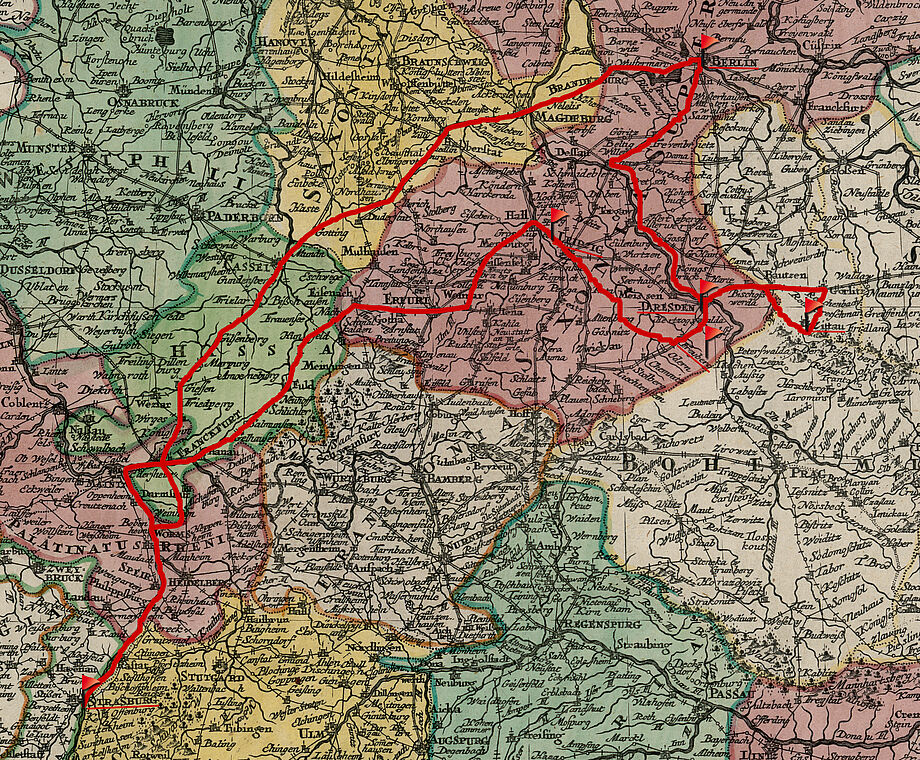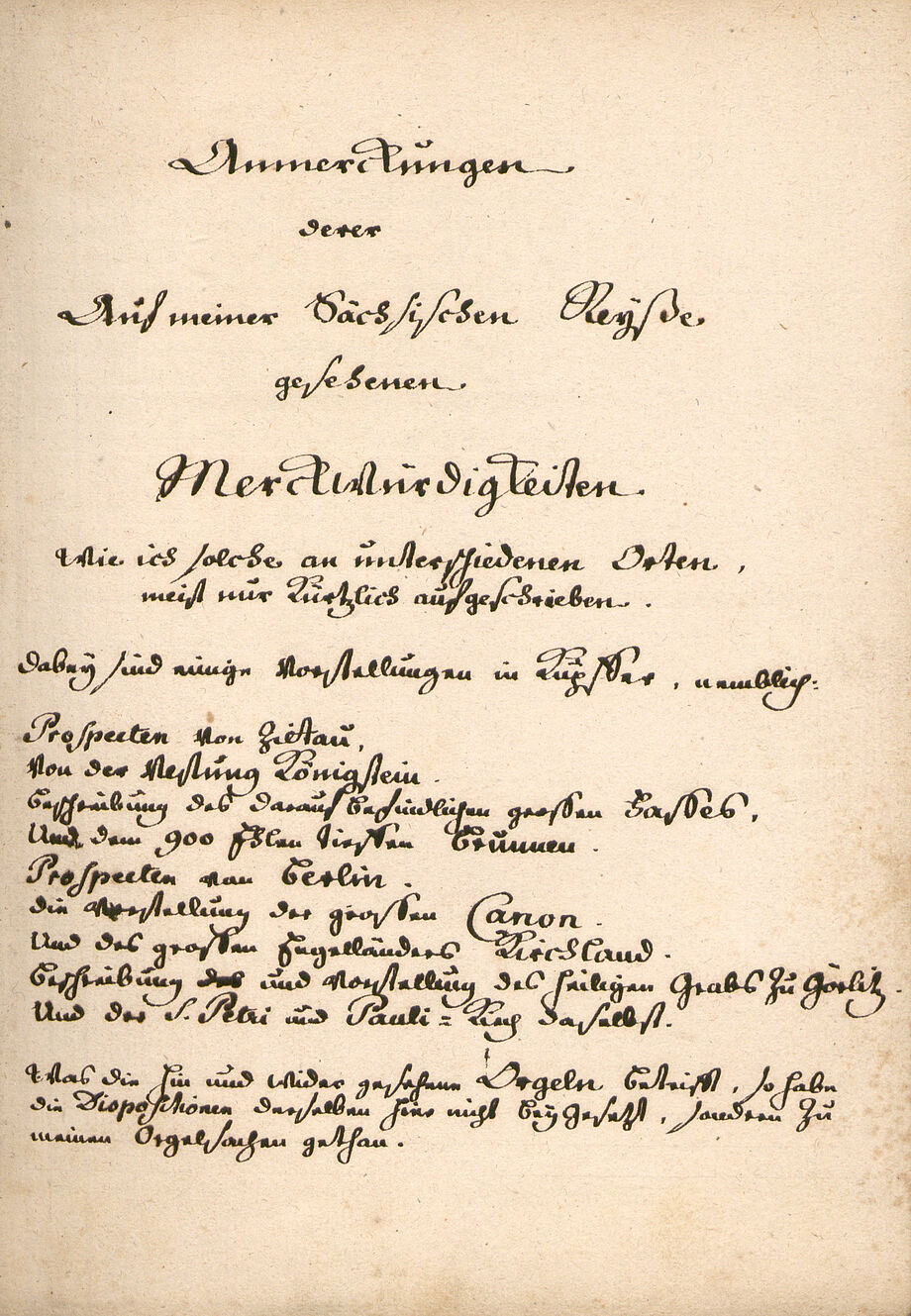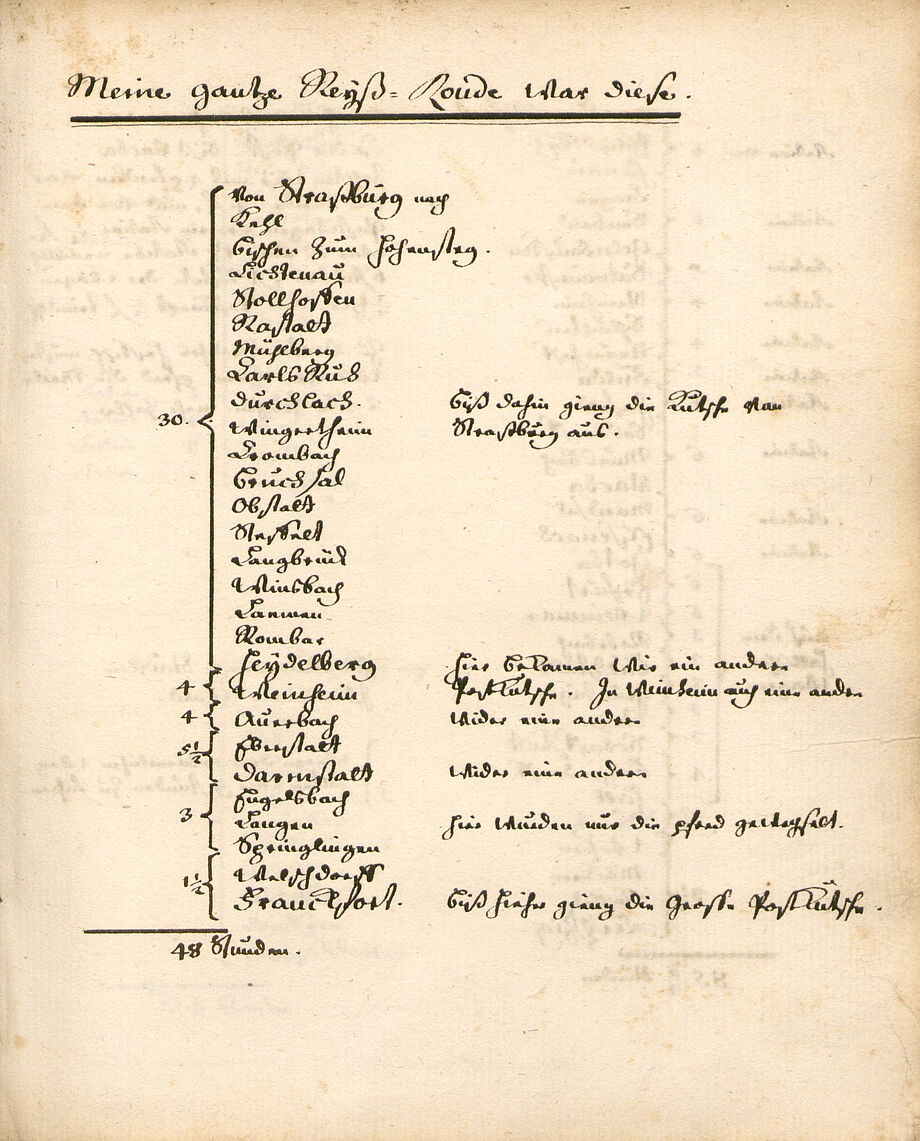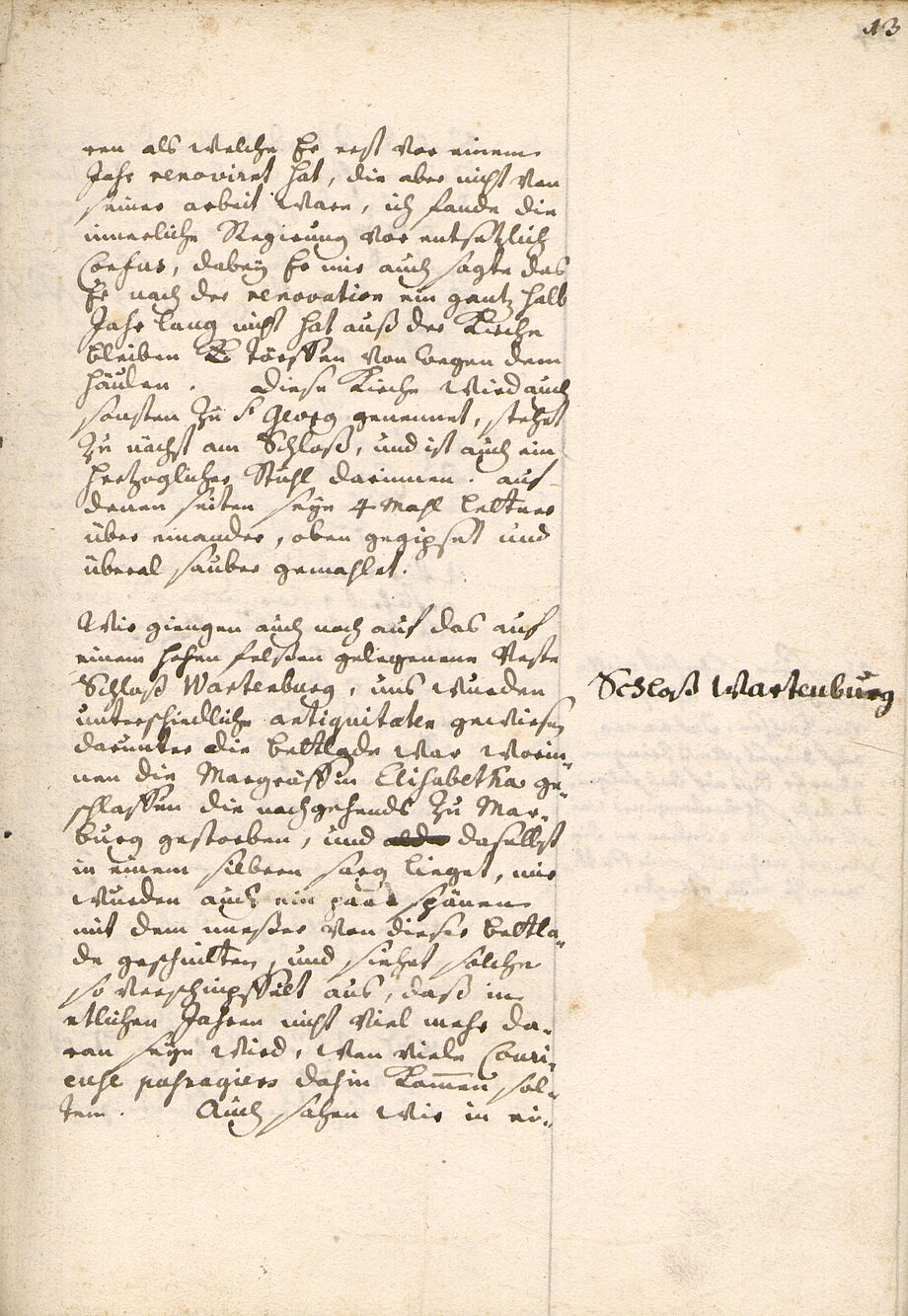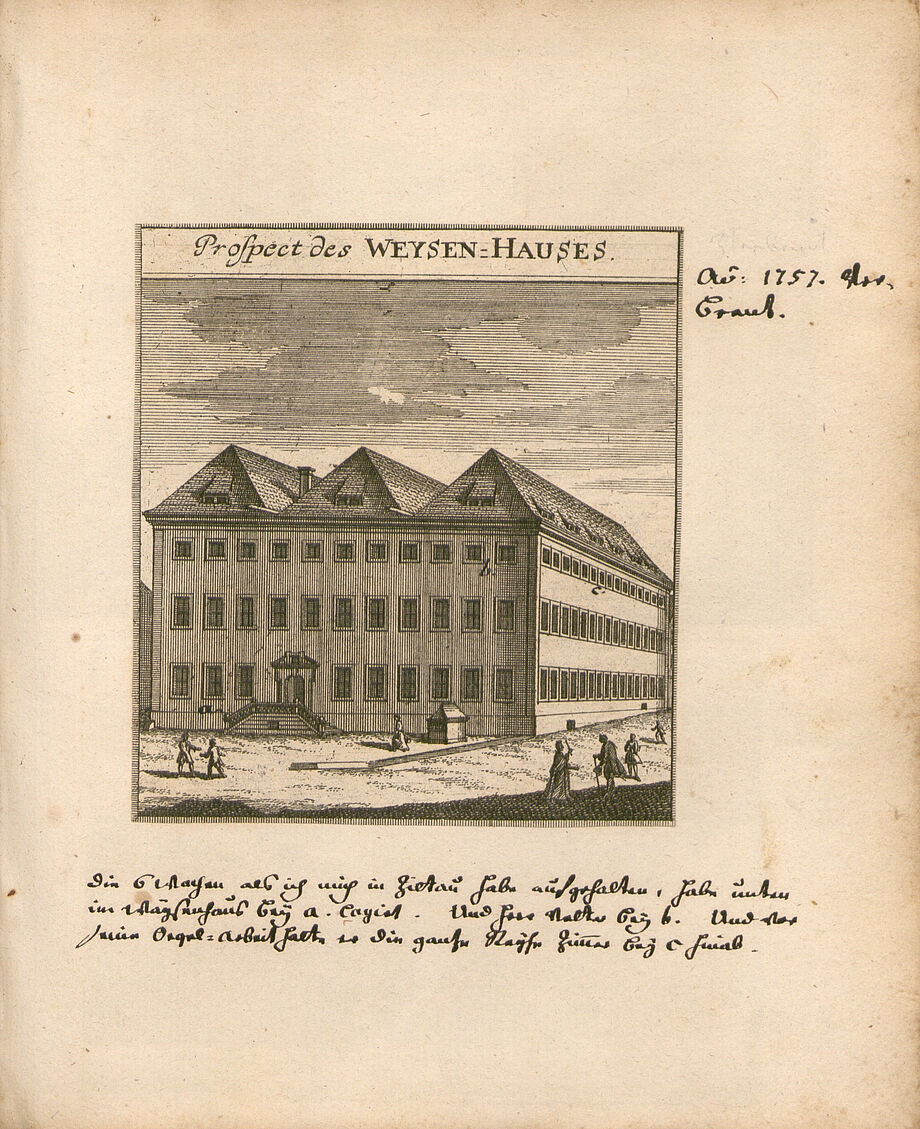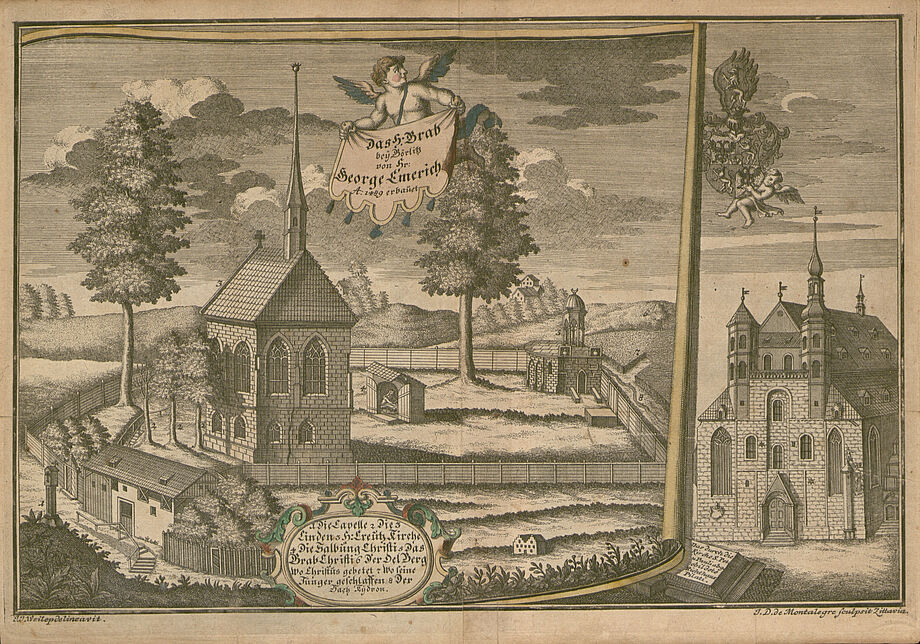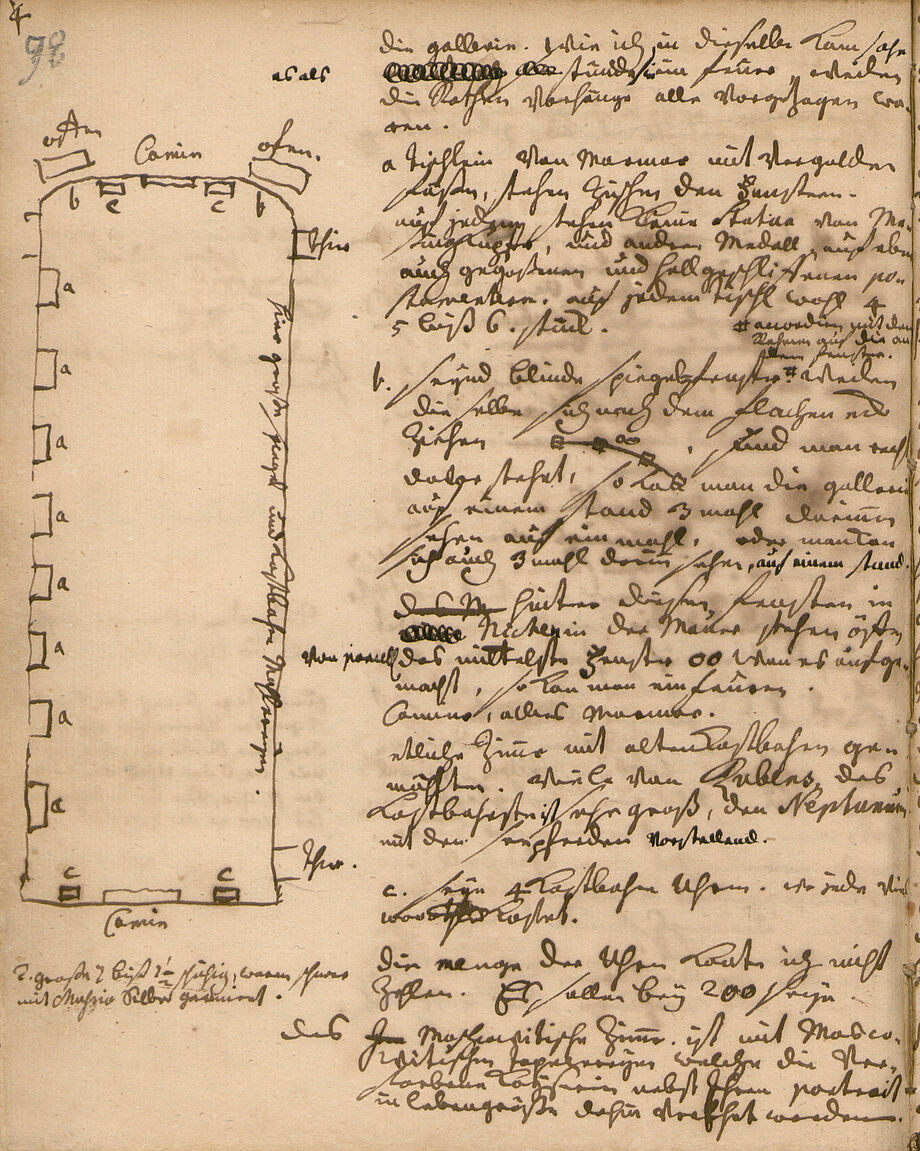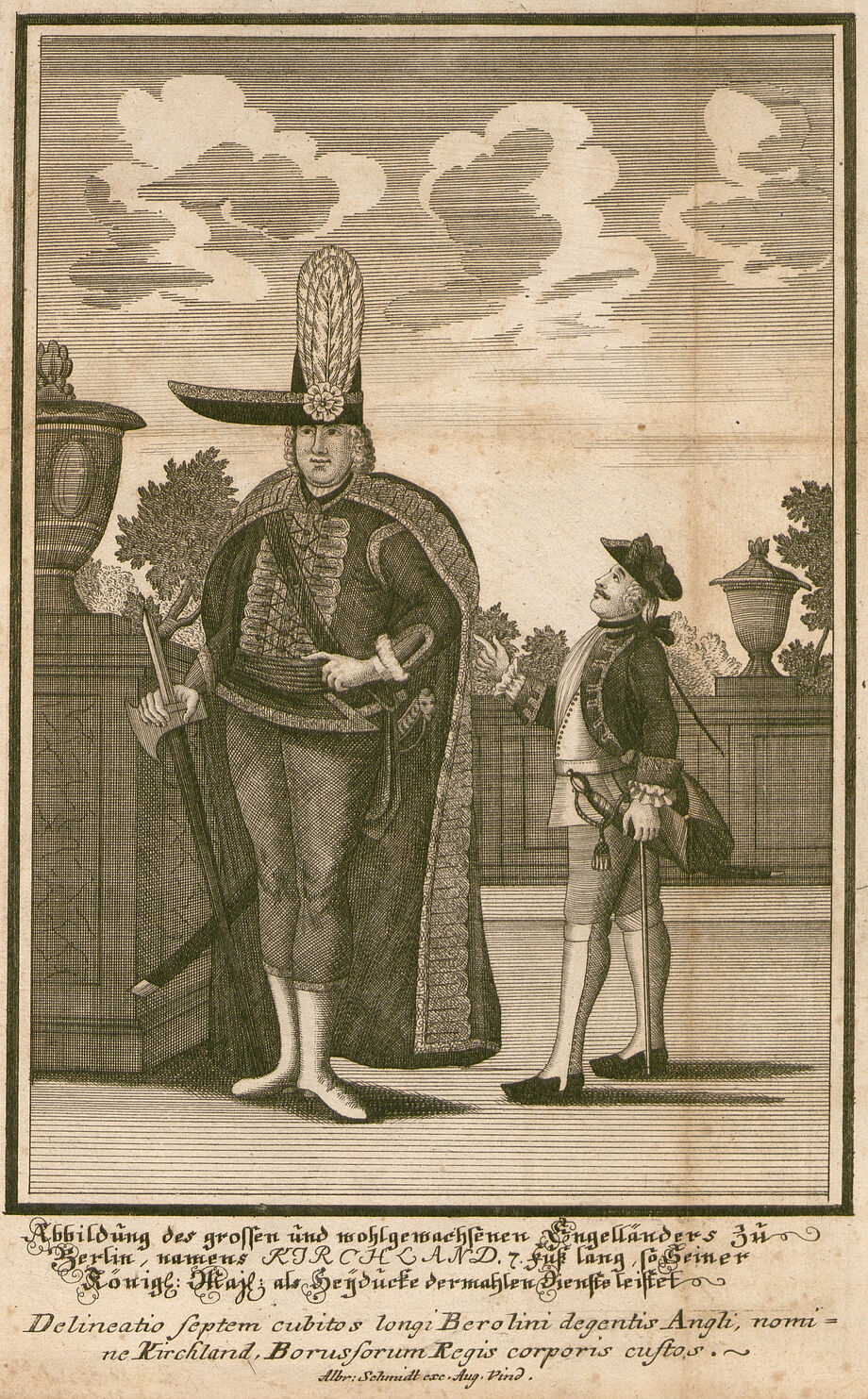Travel diary of Johann Andreas Silbermann
In November 2014, the SLUB Dresden succeeded in acquiring a previously unknown travel diary by the Strasbourg instrument and organ builder Johann Andreas Silbermann (1712-1783) at Sotheby's auction house in London. In the "Anmerckungen derer Auf meiner Sächsischen Reyße gesehenen Merckwürdigkeiten", the nephew of the Freiberg organ builder Gottfried Silbermann describes the journey he undertook from February to June 1741, which took him through Gotha, Leipzig, Dresden, Freiberg, Zittau and Berlin, among other places.
On Tuesday, 21 February 1741, Johann Andreas Silbermann, son of Andreas and nephew of Gottfried Silbermann, begins a long-awaited journey to and through Saxony. Following in the footsteps of his family history - his father came from the Frauenstein region - and with a keen sense of the cultural and historical peculiarities of the area - art and architecture, stories and myths, social circumstances - but equally curious about his own profession, organ building, he explores the country over the coming weeks and records his impressions in vivid descriptions in his travel diary.
The journey happens quickly and without much loss of time. Silbermann takes the through mail, often also the extra mail, and makes quick progress. But despite the urge to get to Saxony (nightly breaks are only taken between midnight and four o'clock), and impatiently suffered travel delays due to the winter weather, there is still time during the day to take a closer look at and describe some places: in Heidelberg, Frankfurt and Fulda he completes a tourist programme that includes city sights, castles, churches and of course organs:
Gotha and Leipzig
Once in Thuringia and Saxony, Silbermann reduced the pace of travel and took plenty of time to study the people, customs and "Merckwürdigkeiten" of the region. The visit to churches and castles - Silbermann receives insights and explanations via the respective bedmaster - is accompanied by detailed observations: he registers and documents the design, materials, colours, dimensions, expenses such as construction and maintenance costs, construction times, etc. of both the exterior and interior appearance. Eisenach, he finds the government of the Schloßkirche organ in appalling confusion, although it had just been renovated; at Wartburg Castle, he is led by the bedside of Margravine Elisabeth, a model of Grimmenstein Fortress and into Luther's room, and wonders about the ladies' clothes:
He likes Gotha very much, Friedenstein Palace fascinates him as much as the Margarethenkirche, the large window panes in the town houses, the better dressed women, the street lighting at night:
Here, as in Eisenach, there are 3 square tin lanterns almost every 60 steps, which are lit at night.
In Erfurt he tastes black radish, Halle amazes him with its towers, the large orphanage and Prussian traces everywhere. Finally, on 6 March, he arrives in Leipzig - not without paying a Saxon groschen at the gate on his arrival at 10 o'clock in the evening. He stays here a little longer, meets G. A. Homilius as a young pupil and through him gains access - not to Bach, who is not visited for unknown reasons, but - incognito - to Johann Scheibe:
Freiberg
On 10 March, Silbermann leaves Leipzig to visit his uncle Gottfried Silbermann in Freiberg, a biological brother of his father with whom he is connected not only by family but also by profession. When he finally arrives, however, he does not meet him. While doing his hair, the wigmaker tells Silbermann that Mr Krause, a close friend of his uncle's, will take care of his uncle's affairs during his absence, and from Krause Silbermann finally learns that his uncle is building a new organ in Zittau and has therefore taken up quarters there for a longer period of time.
Even though Silbermann wants to move on to Zittau quickly, he is persuaded by his cousin Abraham to stay in Freiberg for a few days, visits the churches there, enters a mine, admires the "exhibits" in the castle and learns quite a bit from Freiberg's legendary history during his visits, e.g. the stories of the end of Kunz von Kauffungen or of the rooted son of Lorentz Richter. In the church service he registers the - especially musical - proceedings, and of course he does not miss seeing and hearing his famous uncle's organs. Eventually, however, he is urged away and, accompanied by Abraham, he first travels to Dresden to visit another cousin, Michael. With the promise to stay longer in Dresden on the return journey, Silbermann finally sets off for Zittau without delay, accompanied by Michael.
Zittau
Johann Andreas and Michael Silbermann arrive in Zittau on 18 March. For six weeks, Silbermann "lodges" with his uncle Gottfried in the "orphanage ", with whom he "amuses" himself " constantly in matters concerning our art". He becomes acquainted with the town's dignitaries and undertakes excursions into the surrounding area.
In Lusatia, he visited weaving workshops and, thanks to the family connections of his Zittau acquaintance, was introduced to the secret art of weaving by royal decree; in Görlitz, he grumbled about the confusing organ, which the famous Bach had rightly called a horse organ; the Holy Sepulchre, modelled on the original in Jerusalem, interested him so much that he added an illustrated description to the diary.
And the extent to which Zittau itself grew on him during this time is shown even more than in the daily descriptions of the city in the countless engravings pasted into the diary, like a photo or postcard album, which he comments on several years later:
Dresden
As promised during the previous flying visit, Silbermann stops again in Dresden on his way back from Zittau, where he spends a total of three weeks exploring museums, collections and other sights.
With great meticulousness, he spends more than 22 pages describing his visit to the Green Vault, through which he is guided by the violin virtuoso Georg Pisendel.
Silbermann enriches the detailed prose descriptions of his experiences and impressions with sketches to document what he has seen and, for example, to illustrate the furnishings of a hall in theBrühl Palace, for example.
A musical highlight is the high mass in the Catholic court chapel, which was installed in the Taschenberg Palais at the time.
I was in ampt and vespers in the court church. in the morning the music consisted of 70 people.
And: in the circle of family and new acquaintances we celebrated extensively.:
Berlin
After a tearful farewell from Dresden, Silbermann's path leads him via Wittenberg, where he visits and describes the Schlosskirche with great interest, to Berlin. He arrives there on 30 May and is immediately taken by the attractions of the city: besides churches, it is the palace that captivates him. The state rooms, armoury, anatomy, the cabinet of curiosities attract his attention, as does the royal library with a book machine:
He also describes in detail the attendance of a service in the synagogue:
Finally, a sensation is the encounter with the "great Englishman" Kirkland, who belonged to the great regiment guard of Frederick II. As a memento, Silbermann acquires an engraving which he adds to his diary.
Turn the pages and follow in the footsteps of Johann Andreas Silbermann on a cultural-historical voyage of discoveryhis digitised"Anmerckungen derer Auf meiner Sächsischen Reysse gesehenen Merckwürdigkeiten Wie ich solche an unterschiedenen Orten meist nur kürtzlich aufgeschrieben" - Mscr.Dresd.App.3091
Media echo:
DIE ZEIT: Diary find: Silbermann's journeyWDR3: New Silbermann travel diary auctionedSWR2: Tweets from 1741... (mp3) Dresdner Morgenpost: This is why Saxony is paying 140,000 euros for an old book Deutschlandradio Kultur: Sensational find in DresdenFreiePresse: Diary of Silbermann's nephew is onlineBadischeZeitung: Travel diary of the Strasbourg organ builder Silbermann digitised
